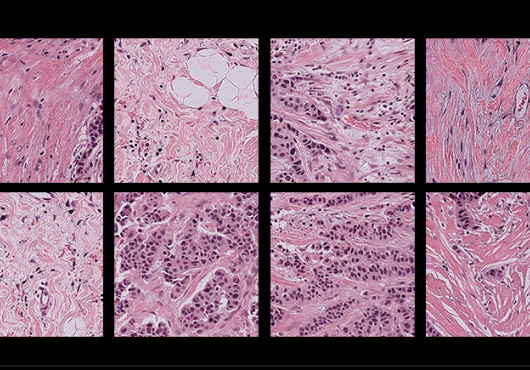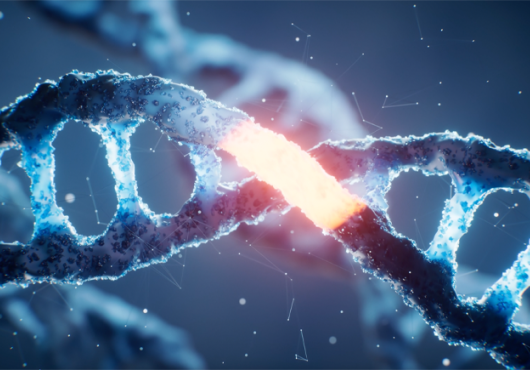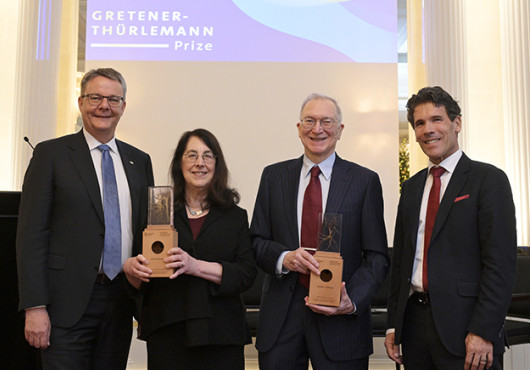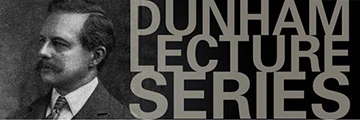
Distinguished University of Oxford biochemist Kim Nasmyth will be the featured speaker at the 2014 Edward K. Dunham Lectureship for the Promotion of Medical Sciences, which will take place on March 17-18 at Harvard Medical School.
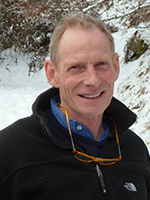 The Whitley Chair of Biochemistry at Oxford, Nasmyth is best known for demonstrating the value of using yeast to answer fundamental questions about cell function and for revealing how chromosomes are regulated during mitosis (cell division).
The Whitley Chair of Biochemistry at Oxford, Nasmyth is best known for demonstrating the value of using yeast to answer fundamental questions about cell function and for revealing how chromosomes are regulated during mitosis (cell division).
“He is one of the most outstanding biologists of the last part of the 20th century,” said Marc Kirschner, chair of the HMS Department of Systems Biology.
“He is also a great communicator,” Kirschner added. “Anyone who attends these lectures, even people who don’t focus on related subjects such as the cell cycle or the genetics of disease, will see that the elegance of his approach and the tools he devised to solve these problems constitutes a virtuoso performance.”
For decades beginning in the late 1800s, scientists watched with wonder as chromosome pairs lined up and split in synchrony within cells that were preparing to divide. What orchestrated the striking phenomenon remained shrouded in mystery until Nasmyth showed that the split requires the destruction of a protein, securin, which then activates an enzyme, separase.
Nasmyth helped illuminate the rest of the process by showing that chromosome pairs are held together by a lasso-like protein ring he co-discovered, called the cohesin complex. When securin is destroyed, separase is freed to cut the rope, and the chromosome pairs fly apart.
Nasmyth identified the three proteins that make up the rope, and demonstrated how it is assembled and then becomes looped around the chromosomes.
“His work has helped us begin to understand what goes wrong in diseases where chromosomes fail to separate properly during mitosis or meiosis, such as Down syndrome,” said Kirschner.
“More than that, he has achieved an intellectual tour de force by not only identifying the molecules and suggesting the mechanism for chromosome segregation, but then going on to prove that mechanism through a series of elegant experiments,” Kirschner said.
Nasmyth will deliver two 60-minute talks during the Dunham Lectures program:
- “How Are Chromosomes Held Together?” 4-5 p.m. March 17; reception to follow in the Martin Center Lobby
- “The Metaphase to Anaphase Transition: Controlled Destruction of Sister Chromatid Cohesion,” 12-1 p.m. March 18
Both talks will be held in the Martin Conference Center Amphitheatre at 77 Avenue Louis Pasteur. They are free and open to students, faculty and staff of HMS and Harvard University as well as all other interested professionals. Seats will be available on a first come, first served basis.
RSVP to Dunham@hms.harvard.edu by March 10 and include which lecture(s) you will attend.
The prestigious Dunham Lectureship was established in 1923 in memory of Edward K. Dunham (Harvard, 1886) to strengthen the bonds of fellowship and understanding among students, investigators and teachers within the medical and basic sciences for the purpose of advancing medical sciences in the broadest sense.
Twenty-eight of the 78 biomedical researchers honored with a Dunham lectureship have been Nobel laureates.
